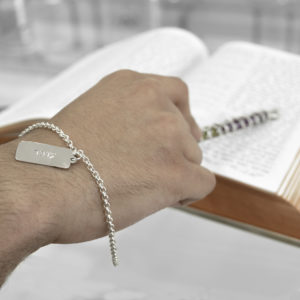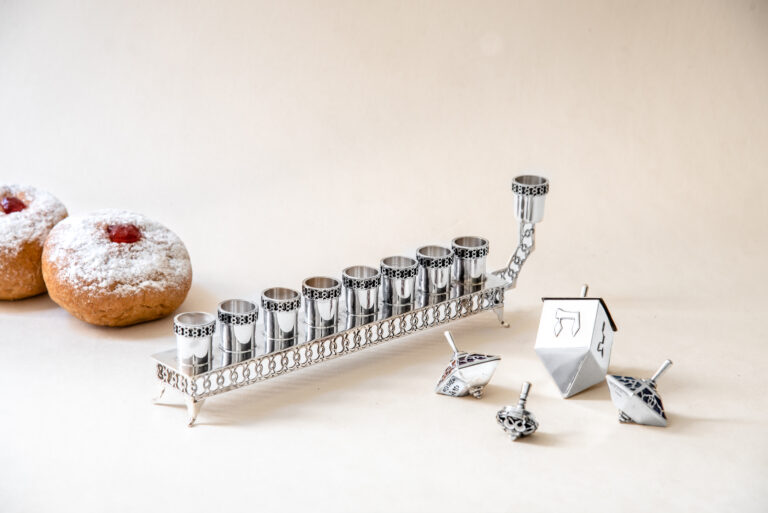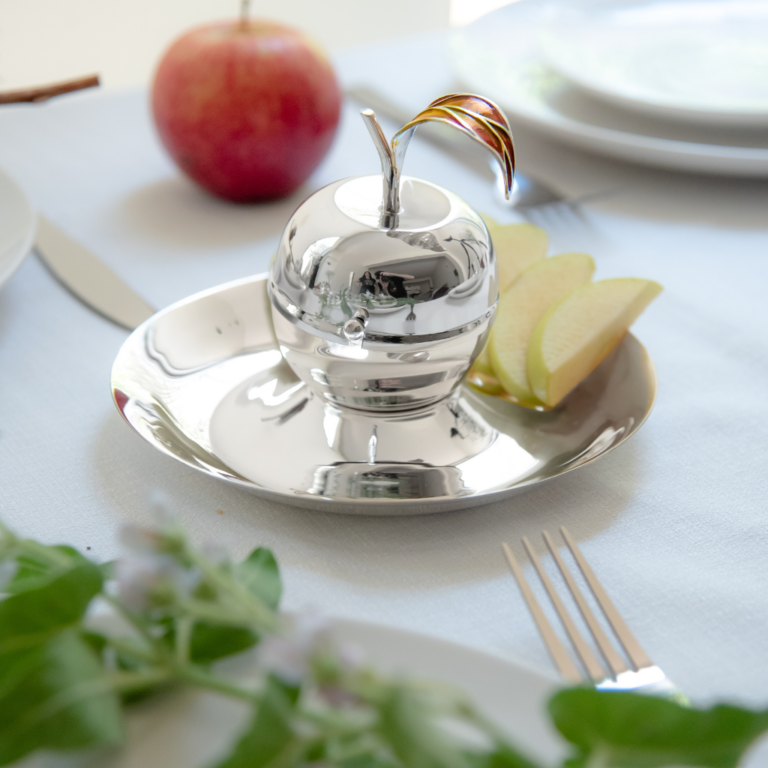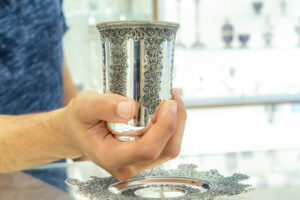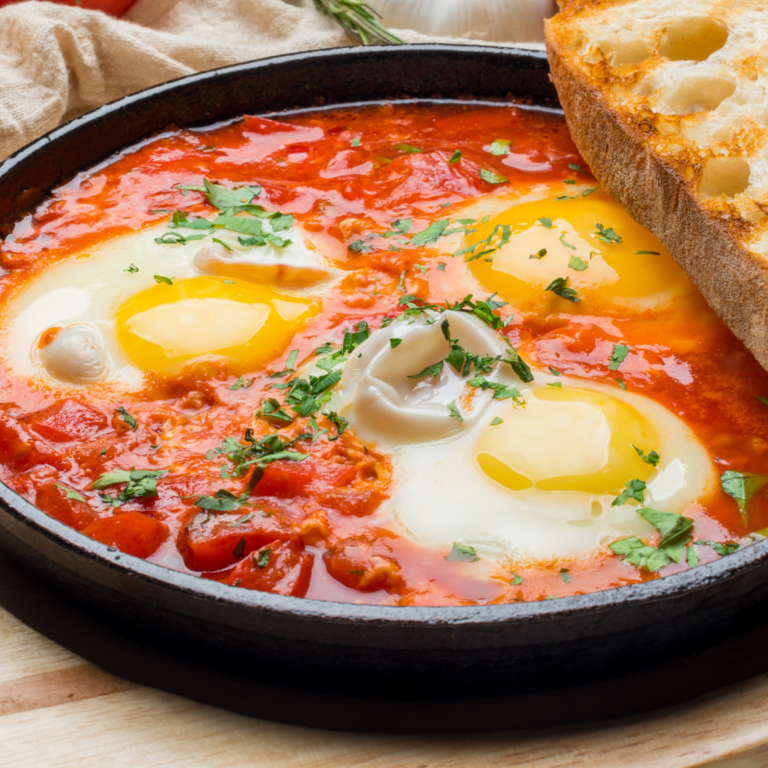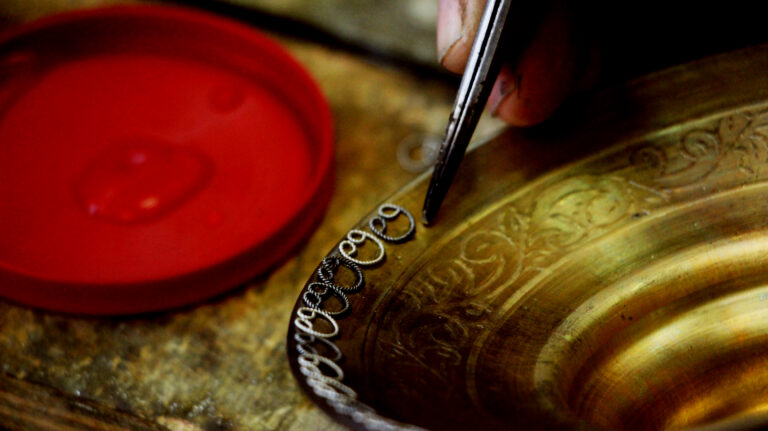 Only a few pieces of antique jewelry today compare to filigree, as its authenticity is unmatched by many other jewelry types.
Only a few pieces of antique jewelry today compare to filigree, as its authenticity is unmatched by many other jewelry types.
True admirers of antique jewelry, especially those from the Victorian and Edwardian eras, almost invariably share this fondness for filigree. As one of the most subtle and elegant metalwork styles, filigree Judaica has a long history.
That’s why jewelry enthusiasts and admirers can spot genuine craftsmanship and original designs in the finer details of any filigree piece.
Filigree also makes different types of jewelry come alive with its attractive designs and shapes. Read on as we explore the history of filigree jewelry, explain its making process, and provide other valuable information. Let’s go!
To listen to the entire article, please click on the play button.
What Is Filigree Jewelry?
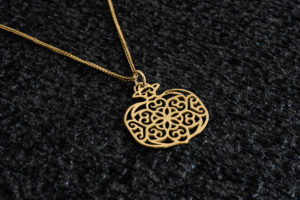
Filigree is intricate metalwork where fine metal threads are twisted or curled into a design. Many use them in jewelry and other minor forms of metalwork. The Latin words “filum” (thread) and “granum” (grain) are the origins of the filigree meaning, also known as filigree. It comprises tiny beads or twisted threads that combine to create beautiful and captivating motifs.
Artisans frequently mix tiny beads and twisted threads to produce even more intricate pieces. Typically, it has elements of gold and silver. In jewelry, silver filigree emphasizes modesty, while gold filigree displays splendor.
How to Make Filigree Jewelry? Watch and Find Out
Discover our stunning collection of filigree jewelry.
Yemenite Art

Yemenite art is a rich and vibrant artistic tradition that showcases the cultural heritage of Yemen. Rooted in centuries of history, this art form encompasses various mediums such as painting, calligraphy, ceramics, jewelry, textiles, and architecture.
One prominent aspect of Yemenite art is its intricate and detailed craftsmanship. Skilled artisans pay close attention to every fine detail, resulting in exquisite pieces that are not only visually appealing but also imbued with cultural significance.
Calligraphy is a prominent feature of Yemenite art, with styles like kufic and thuluth being commonly used. These elegant script forms are often found adorning manuscripts, mosque interiors, or even everyday objects like pottery.
When it comes to ceramic work, Yemen is renowned for its colorful and ornate designs. From hand-painted tiles to intricately patterned pottery vessels known as zhimian or bidyouni, these creations showcase the mastery of the craftsmen who carry on this artistic tradition.
Silverwork and jewelry hold a special place in Yemenite art as well.
Traditional silver ornaments like necklaces (such as “khamsa”), bracelets (“zahaf”), and earrings (“dagger earrings”) reflect the skillful metalwork techniques passed down through generations.
Textiles also play an integral role in Yemenite art. Woven fabrics with vibrant patterns such as striped shawls (madhad), embroidered veils (thobe), or decorative rugs (jajim) capture the essence of this expressive form of artistry.
The architectural heritage of Yemen is another testament to its artistic prowess. Towering structures like the famous mudbrick skyscrapers (qasbahs) found in cities such as Sana’a demonstrate not only a unique aesthetic but also practical consideration for climate control in the region.
In conclusion, Yemenite art presents a diverse range of artistic expressions that celebrate the country’s culture and traditions. From calligraphy to ceramics, silverwork to textiles, and architecture, the intricacy and beauty of Yemenite art continue to captivate and inspire people worldwide.
Yemenite Art Filigree Judaica

Yemenite Art Filigree Judaica is an exquisite form of traditional Jewish craftsmanship that originated in Yemen. This unique art form combines intricate filigree work with elements of Judaica to create breathtaking pieces of religious and cultural significance.
Filigree, a delicate and intricate metalwork technique, is meticulously crafted by skilled artisans who manipulate thin wires of silver or gold into ornate designs. These designs often feature motifs inspired by Jewish symbolism, such as the Star of David, Hamsa hand, and menorah.
Yemenite Art Filigree Judaica encompasses a wide range of ceremonial objects and jewelry. Some popular examples include Mezuzah cases, Torah pointers (yad), Kiddush cups, spice boxes (besamim), and decorative ornaments for Shabbat candle lighting.
Each piece of Yemenite Art Filigree Judaica tells a story and reflects the rich heritage and traditions of the Yemenite Jewish community. The craftsmanship involved in creating these items is highly valued for its attention to detail, precision, and timeless beauty.
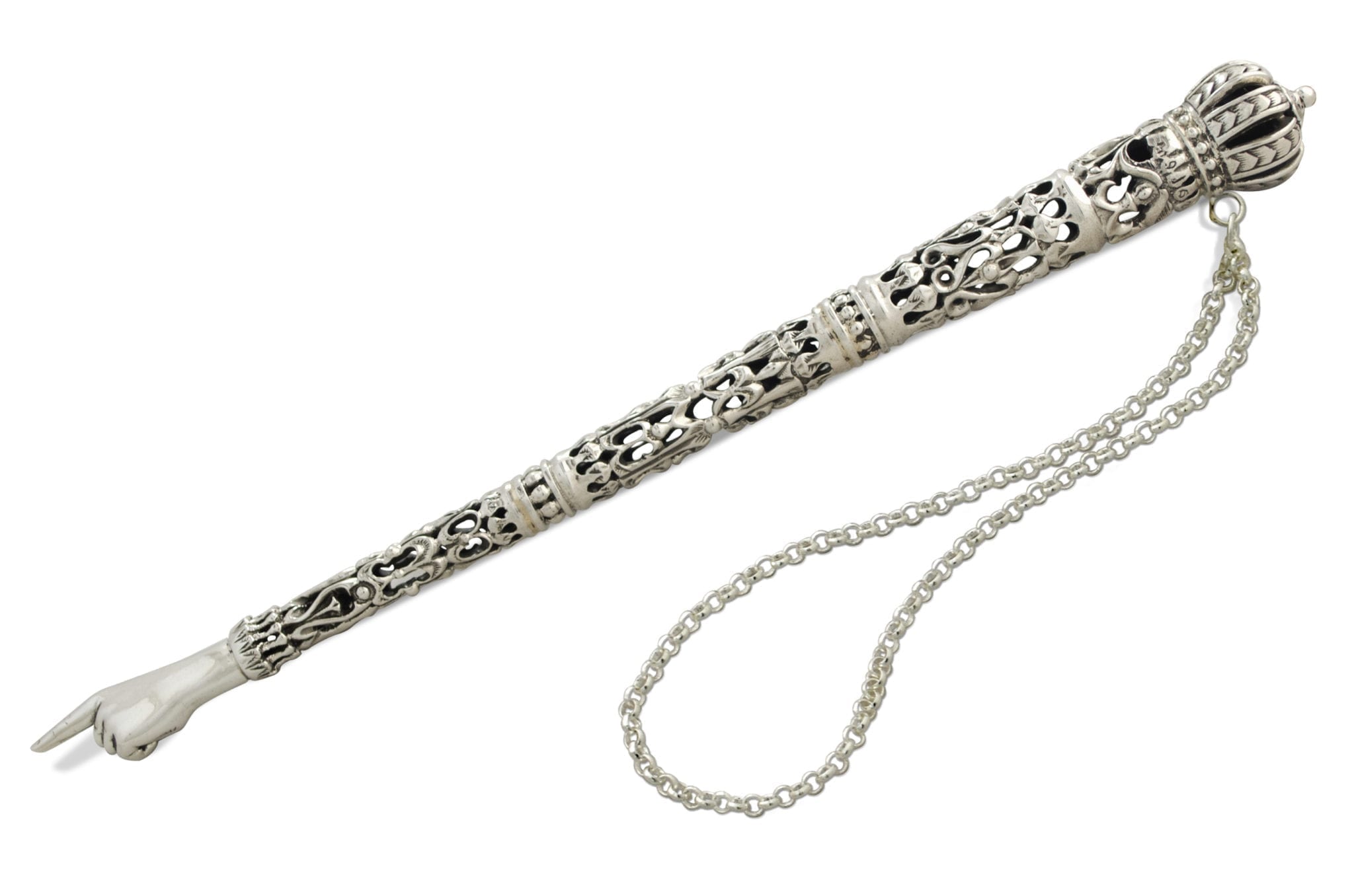
Today, these extraordinary creations are treasured not only for their religious significance but also as works of art that celebrate the cultural diversity within Judaism. Whether displayed in homes or worn as personal adornments, Yemenite Art Filigree Judaica continues to captivate admirers with its delicate intricacy and historical significance.
Chack our unique collection of Filigree Candlesticks.
Discover our exclusive assortment of Filigree Kiddush Cups.
How to make a silver Kiddush cup with filigree decorations, watch and find out
What Is The History Of Filigree?
 According to archaeological discoveries in ancient Mesopotamia, filigree was employed in jewelry as early as 3,000 BC. The development of “telkari,” a type of filigree utilizing gold and silver wires, took place in upper Mesopotamia, especially in Midyat in the Mardin Province of Turkey, in the 15th century. The ‘telkari’ is still being produced in Mardin by skilled artisans.
According to archaeological discoveries in ancient Mesopotamia, filigree was employed in jewelry as early as 3,000 BC. The development of “telkari,” a type of filigree utilizing gold and silver wires, took place in upper Mesopotamia, especially in Midyat in the Mardin Province of Turkey, in the 15th century. The ‘telkari’ is still being produced in Mardin by skilled artisans.
Other places that highlight the history of filigree are Medieval Europe and the Iberian Peninsula.
● Medieval Europe
Numerous collections of medieval jewelry dating from the sixth to the twelfth centuries came from European monasteries or Constantinople. These pieces contain models of the work produced by Byzantine goldsmiths. These jewels are not only embellished with stones but also with filigree.
The Saxons, Britons, and Celts were extremely skilled goldsmiths in North Europe. There were examples of filigree designs on a brooch, a sword hilt, and Anglo-Saxon tombs. The Staffordshire Hoard of Anglo-Saxons, filled with gold and silver, was found in 2009. The trove has multiple pieces of unique filigree; many think it dates from 700 CE.
Numerous shrines and personal accessories at the Royal Irish Academy in Dublin are filigree-decorated. Tara, a Celtic brooch, is well known there. Due to its intricate designs, the Irish Filigree differs from other types because it is almost impossible to trace the threads. Typically, the threads’ two ends have structures resembling a serpent’s head and tail.
What Is The History Of Portuguese Filigree?
 Many ask, “What period is filigree?” or “What era are filigree rings from?” The earliest filigree pieces date between 2000 and 2500 BC and existed on the Iberian Peninsula.
Many ask, “What period is filigree?” or “What era are filigree rings from?” The earliest filigree pieces date between 2000 and 2500 BC and existed on the Iberian Peninsula.
Still, some think that the jewels belonged to Middle Eastern traders. When the Arabs arrived in the area in the eighth century, Portugal manufactured filigree for the first time.
New filigree patterns have come up over time. Portugal developed its distinctive images, themes, and shapes over time. The filigree heart is the nation’s most recognizable symbol and an ancient craft many still practice.
What Are The Different Types Of Filigree Jewelry?
Jewelry made with the filigree technique requires diligence, elegance, and expertise. After working with the metal and sculpting it into the form you want, a jeweler joins tiny beads and twisted threads. Filigree is a design in jewelry that many people find themselves drawn to. Below are a few forms of jewelry that you can discover filigree in:
1. Filigree Rings
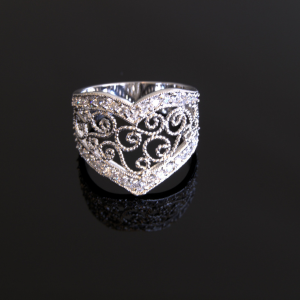 Filigree rings are essential accessories that highlight your style. You could wear just one ring or one on each finger when constructing your outfit. Filigree rings give your look a historic feel thanks to their distinctive patterns.
Filigree rings are essential accessories that highlight your style. You could wear just one ring or one on each finger when constructing your outfit. Filigree rings give your look a historic feel thanks to their distinctive patterns.
● Engagement Rings
Wedding bands are precious. It represents love. It is a commitment to remain partners forever. Filigree engagement rings are ideal for any woman who wishes to have a unique band that constantly reminds her partner of her existence. The exquisite filigree on the ring reminds you of your special relationship with your significant other.
● Customized Rings
More significant than typical rings, statement rings are incredible. Anyone who wishes to use jewelry to reflect their particular personality and way of life has an excellent opportunity. They are solid elements that give your style a new perspective. Filigree statement rings, whether gold or silver filigree, mix contemporary and traditional styles in their glitzy designs.
● Diamond Rings
The famous jewels that many use in wedding bands are diamonds. Diamond rings are distinctive due to various characteristics, including their cut and carat. Filigree diamond rings are incredibly unique and blend traditional stones with true craftsmanship.
Explore our exquisite filigree jewelry collection.
2. Filigree Necklaces
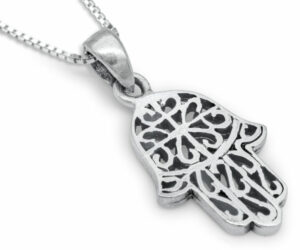
A filigree necklace is the perfect accent for any ensemble. Elegant necklaces can enhance your look, depending on the neckline of your clothing.
● Pearl Necklaces
A pearl necklace is an ideal accessory to showcase your class. Pearls are a fashion must-have because they represent royalty and innocence. A pearl’s magnificent appearance is given a historic dimension by adding the filigree design.
● Choker Necklaces
No matter the style or design of the piece you are wearing, a choker necklace matches it. A necklace worn close to the neck gives the neck an exceptionally stunning appearance. Silver filigree choker necklaces give your outfit a spooky touch.
● Medallion Necklaces
People once used medallion necklaces to demonstrate status and wealth. They are elegant and understated accessories that go nicely with various outfits. Typically, one side of filigree medallion necklaces comes from using the excellent skill of filigree art.
Explore our exquisite Filigree Necklaces collection.
3. Filigree Earrings
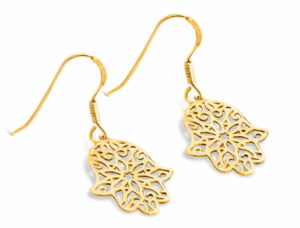
Filigree earrings, whether tiny or massive, give your outfit movement. They are simple accessories that transform your everyday look into an elegant evening.
● Pendant Earrings
The best earrings to wear every day are studs. Although they are relatively straightforward, they give your outfit a romantic feel. Despite being little accessories, filigree stud earrings beautifully showcase intricate designs.
● Ear Crawlers
Anyone wishing to display their unique flair should use ear crawlers. You won’t need to wear several earrings when you have ear crawlers. Ear crawlers become a conversation item when combined with the distinctive artistry of filigree!
● Drop Earrings
Beautiful drop earrings are an indispensable accessory for every day and evening wear. They add a fashionable finishing touch to your outfit. The drop earrings are more attractive because of the lovely filigree accents.
Discover the beauty of our stunning collection of Filigree Earrings.
4. Filigree Bracelets
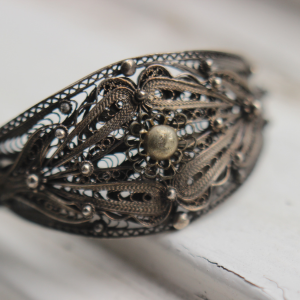 You can display your style on your wrists with filigree bracelets. Bracelets made of gold and silver, the ultimate statement accessories, can help you give your outfit more depth.
You can display your style on your wrists with filigree bracelets. Bracelets made of gold and silver, the ultimate statement accessories, can help you give your outfit more depth.
● Leather bracelets
Leather has had applications in clothes and accessories since the beginning of time. Leather gives bracelets a sharp, sophisticated appeal. The bracelet is made of leather filigree and mixes a natural fabric with distinctive filigree designs. As a result, you can give your trendy appearance a conventional element.
● Cuff Bracelets
The cuff bracelet is a vital accessory widely used for numerous years. Back then, wearing a cuff bracelet composed of gold or silver would emphasize one’s high social rank. Beautiful filigree designs give simple ensembles a fashionable edge.
● Beaded Armbands
One of the most popular styles of bracelet is the beaded bracelet. Although people can wear them with formal attire, they are also great with a relaxed outfit. Beaded bracelets with beaded filigree combine history and contemporary culture.
Final Words
Distinctive filigree motifs and the labor of love that went into creating them give jewelry of any kind an air of elegance. The filigree technique is a less expensive approach to making beautiful jewelry since it adds sparkle without jewels. Jewelry with this metalwork is also a fantastic alternative for both men and women. Elevate your fashion and style today by including filigree in your jewelry collection.
In addition, it is also important to evaluate the Yemenite art filigree Judaica is a unique and exquisite form of Jewish craftsmanship that holds deep cultural and historical significance. The intricate metalwork and delicate designs of filigree jewelry, ornaments, and ritual objects showcase the rich heritage of the Yemenite Jewish community.
